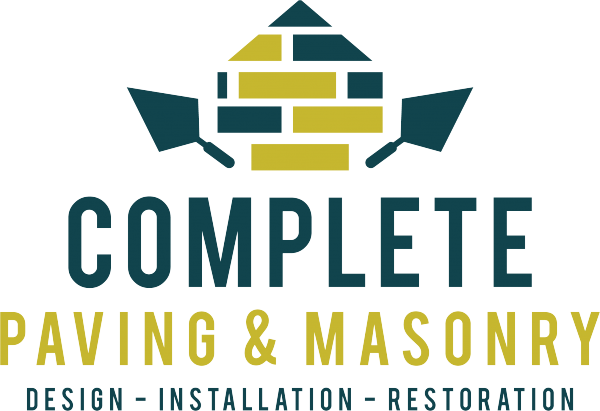Best Practices for Chimney Installation Success
The successful installation of a chimney is crucial for the efficient and safe operation of any heating system. When installing a chimney, it is essential to carefully follow national standards to ensure proper functioning and to prevent potential hazards. Chimney Installation Hyde Park requires meticulous attention to detail, from selecting the appropriate materials to ensuring proper clearances and ventilation requirements are met to guarantee a safe and effective operation.
Moreover, professional expertise and adherence to manufacturer specifications are fundamental in achieving a successful chimney installation. It is imperative to consult with qualified professionals and engineers to design and install the system correctly. By prioritizing precision and compliance with national standards, homeowners can enjoy a functional and reliable chimney system that enhances both comfort and safety in their homes.
Efficient Chimney Installation Techniques
Efficient Chimney Installation Techniques play a crucial role in ensuring the safety and functionality of a chimney system. Proper installation techniques not only help in maximizing the efficiency of the chimney but also contribute to its longevity. When undertaking a Chimney Installation Hyde Park, it is essential to follow industry best practices to guarantee a successful and durable chimney structure.
One key technique for efficient chimney installation is ensuring proper alignment and secure connections of chimney components. Any gaps or loose fittings can result in issues such as smoke leakage or insufficient draft. Additionally, utilizing high-quality materials and following manufacturer guidelines for installation are vital steps in achieving an efficient chimney system. By paying attention to detail and adhering to established installation techniques, homeowners can enjoy a well-functioning chimney that enhances the comfort and safety of their property.
Understanding Chimney Draft and Airflow Dynamics
Understanding the principles of chimney draft and airflow dynamics is crucial for ensuring the efficiency and safety of a chimney installation. When considering the construction and placement of a chimney, factors such as temperature differentials, flue sizing, and the overall height of the chimney need to be carefully examined. In a Chimney Installation Hyde Park, for instance, understanding how air pressure differentials impact airflow within the chimney is essential for optimal performance.
Moreover, the design and orientation of the chimney relative to the prevailing winds in the area can significantly influence the draft efficiency. Ensuring proper air circulation and minimizing restrictions within the chimney structure are vital for maintaining a strong and consistent draft. In a Chimney Installation Hyde Park, one must consider not only the architectural aesthetics but also the practical aspects of airflow dynamics to guarantee the chimney’s functionality and longevity.
Tips for Improving Chimney Draft Efficiency
To enhance chimney draft efficiency, ensuring proper chimney height is essential. The chimney should extend at least 3 feet above the highest point where it passes through the roof. Additionally, it is crucial to keep the chimney flue clean and free of any blockages or debris that could impede airflow. Regular inspection and cleaning of the chimney will help maintain optimal draft performance, especially in high-use fireplace settings. For older chimneys, considering a professional inspection by a certified chimney sweep is recommended to address any structural issues that may affect draft efficiency. For instance, a well-maintained Chimney Installation Hyde Park should adhere to these standard practices to achieve the best possible draft performance. Investing time and resources into chimney maintenance will not only improve draft efficiency but also contribute to overall safety and longevity of the chimney system.
Regulations for Chimney Installations in Historic Buildings
Regulations for chimney installations in historic buildings impose strict guidelines to ensure the preservation of architectural integrity and historical value. Chimney Installation Hyde Park must adhere to these regulations to protect the aesthetic appeal and structural stability of the property. Historic buildings often have unique architectural features and materials that require careful consideration during chimney installations to maintain the authenticity of the structure.
Moreover, regulations governing chimney installations in historic buildings also emphasize the importance of using materials and techniques that are in line with the building’s original design. Chimney Installation Hyde Park must use materials that blend seamlessly with the existing structure while ensuring safety and efficiency. By following these regulations, installers can successfully integrate chimneys into historic buildings without compromising their historical significance.
Preserving Historical Integrity During Chimney Installations
Preserving the historical integrity during Chimney Installation Hyde Park requires a delicate balance between modern functionality and preserving the architectural heritage of the building. When undertaking chimney installations in historic buildings, meticulous planning and attention to detail are crucial to ensure that the character and charm of the structure remain intact. Collaboration between chimney installation experts and historic preservation professionals is essential to navigate the challenges that may arise during the process.
Adhering to specific guidelines and regulations set forth for chimney installations in historic buildings is paramount to maintaining the authenticity of the structure. It is imperative to use materials and techniques that are in harmony with the original design of the building, ensuring that the chimney installation seamlessly integrates with the historical aesthetic. By prioritizing the preservation of historical integrity during chimney installations, we can safeguard the rich heritage of our architectural treasures for future generations to appreciate and enjoy.
FAQS
What are some common mistakes to avoid during chimney installation?
Some common mistakes to avoid during chimney installation include improper sizing, poor positioning, inadequate insulation, and lack of proper clearance from combustible materials.
Why is it important to follow national standards for chimney installations?
Following national standards ensures that the chimney installation is safe, efficient, and compliant with regulations. It helps minimize the risk of fire hazards and ensures proper functionality of the chimney system.
How can I ensure that my chimney installation meets national standards?
To ensure that your chimney installation meets national standards, it is recommended to hire a professional chimney installer who is knowledgeable about the latest codes and regulations. Additionally, make sure to use high-quality materials and follow manufacturer’s guidelines.
Do I need a permit for chimney installation?
In most cases, a permit is required for chimney installation to ensure compliance with building codes and regulations. It is important to check with your local building department for specific requirements in your area.
Can I install a chimney in a historic building?
Installing a chimney in a historic building requires special considerations to preserve the historical integrity of the structure. It is recommended to consult with a preservation specialist and follow regulations for historic buildings to ensure proper installation while maintaining the building’s historical significance.
Related Links
Chimney Installation Hyde Park
Safety Codes for Chimneys in Hyde Park
Materials Requirements for Chimney Installation



